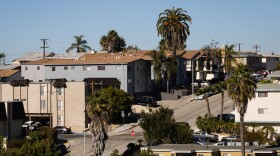LOS ANGELES — The operator of California’s troubled San Onofre nuclear power plant told state regulators the damaged reactors may restart by the end of the year, according to documents obtained Monday by The Associated Press.
The tentative dates — Nov. 18 for the Unit 2 reactor and Dec. 31 for its sister, Unit 3 — provide a glimpse at when Southern California Edison could revive the plant that has been shuttered for six months.
Edison spokeswoman Jennifer Manfre said the dates were submitted to state power managers for planning, and could be changed. The dates do not represent a request to restart either reactor, which must be submitted to the Nuclear Regulatory Commission.
The federal agency has detailed a series of steps the company must meet before it will consider allowing the reactors, located along a strip of beach between San Diego and Los Angeles, to restart.
Company documents show that Edison informed the Public Utilities Commission staff of the “return to service” dates in a July 23 briefing. The dates are required for planning by the agency that operates the state’s wholesale power system, the California Independent System Operator.
On Tuesday, company officials are expected to release three months of financial and technical data on the seaside plant, which could be a steppingstone to seeking NRC approval for a restart later this year. Company officials have previously suggested one, or both, of the reactors could run at reduced power to reduce vibration that has been damaging tubing that carries radioactive water.
The trouble began to unfold in January, when the Unit 3 reactor was shut down as a precaution after a tube break. Traces of radiation escaped at the time, but officials said there was no danger to workers or neighbors. Unit 2 had been taken offline earlier that month for maintenance, but investigators later found unexpected wear on scores of tubes inside both units.
A three-month federal probe blamed a botched computer analysis for generator design flaws that ultimately resulted in excessive wear to scores of alloy tubes. Edison has been trying to determine how to correct the problem, while environmental activists have depicted the plant as a disaster-in-the-making.
About 7.4 million Californians live within 50 miles of San Onofre, which can power 1.4 million homes.
The generators, which resemble massive steel fire hydrants, are one of the central pieces of equipment in a nuclear plant. At San Onofre, each one stands 65 feet high, weighs 1.3 million pounds, with 9,727 U-shaped tubes inside, each three-quarters of an inch in diameter.
If a tube breaks, there is the potential that radioactivity can escape into the atmosphere. Serious leaks also can drain cooling water from a reactor.
Gradual wear is common in such tubing, but the rate of erosion at San Onofre startled officials since the equipment is relatively new. The generators were replaced in a $670 million overhaul and began operating in April 2010 in Unit 2 and February 2011 in Unit 3.
Edison has been facing pressure from some nearby communities and anti-nuclear activists that have raised safety concerns. Former nuclear industry executive Arnie Gundersen, a consultant for the environmental group Friends of the Earth, said the projected dates show the company is preparing to rush a repair job.
The group has argued that Edison misled the NRC about modifications, including adding 400 tubes to each generator.
“There are all sorts of questions,” said Gundersen, who has written several reports critical of Edison. “I don’t think they can be repaired in less than about 18 months. In order to do it right, you really need to take the top ... off the steam generators and physically go in.”
Tubes must be taken out of service if 35 percent — roughly a third — of the alloy wall wears away, and each of the four generators at the plant is designed to operate with a maximum of 778 retired tubes.
In one generator in Unit 3, 420 tubes have been retired. The records show another 197 tubes in that generator have between 20 percent and 34 percent wear, meaning they are close to reaching the point when they would be at risk of breaking.
More than 500 others in that generator have between 10 percent and 19 percent wear in the tube wall.
The steam generators were manufactured by Japan-based Mitsubishi Heavy Industries. The design of the generators also is under congressional scrutiny.
The plant is owned by SCE, San Diego Gas & Electric and the city of Riverside. The Unit 1 reactor operated from 1968 to 1992, when it was shut down and dismantled.





